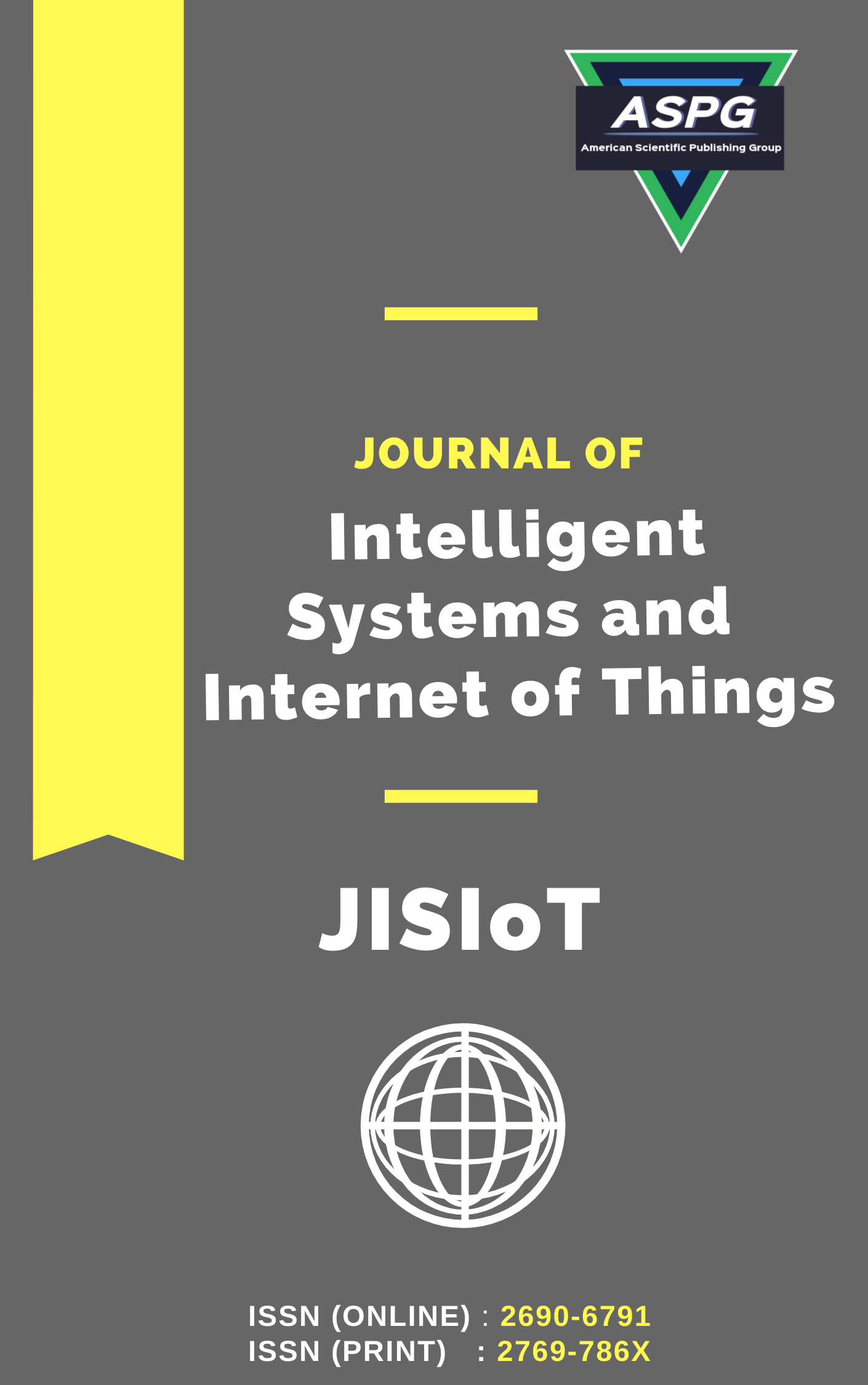

Volume 18 , Issue 1 , PP: 260-273, 2026 | Cite this article as | XML | Html | PDF | Full Length Article
Khasimbee Shaik 1 * , K .V. Satyanarayana 2 , Tirimula Rao Benala 3
Doi: https://doi.org/10.54216/JISIoT.180120
Software quality assurance teams can increase productivity and efficiency by expediting the issue-fixing process through automatic localization of bug files. Although source code and bug reports provide valuable semantic information, current bug localization techniques typically underuse it. Numerous deep learning and word embedding models have been developed over time. The word-embedding model used to represent bug reports and the deep learning model used for categorization determine how effective those methods are. Aim of this research is to construct word-embedding method, which has been automated for bug detection using deep learning techniques. Here the input data has been collected as software design based monitored data and processed. Then this data has been analyzed using Bi-LSTM voting vector word embedding model and the feature classification is carried out using convolutional naïve bays attention perceptron neural network in bug detection model. The experimental analysis is carried out in terms of training accuracy, precision, Mean square error, F-1 score, and recall. Furthermore, cross-training datasets from the same and distinct domains are used to gauge how effective the suggested approach is. For datasets in the same domain, suggested system obtains a good high accuracy rate; for datasets in separate domains, it achieves a poor accuracy rate.
Word embedding model , Bug detection , Deep learning techniques , Bi-LSTM voting vector , Convolutional naï , ve bays
[1] Wang, R., Ji, X., Xu, S., Tian, Y., Jiang, S., & Huang, R. (2024). An empirical assessment of different word embedding and deep learning models for bug assignment. Journal of Systems and Software, 210, 111961.
[2] Chen, B., Zou, W., Cai, B., Meng, Q., Liu, W., Li, P., & Chen, L. (2024). An empirical study on the potential of word embedding techniques in bug report management tasks. Empirical Software Engineering, 29(5), 122.
[3] Sepahvand, R., Akbari, R., Jamasb, B., Hashemi, S., & Boushehrian, O. (2023). Using word embedding and convolution neural network for bug triaging by considering design flaws. Science of Computer Programming, 228, 102945.
[4] Devi, M. C., & Rajkumar, T. D. (2025). A novel attention-based deep learning model for software defect prediction with bidirectional word embedding system. Soft Computing, 1-18.
[5] Patil, A., Han, K., & Jadon, A. (2024, March). A comparative analysis of text embedding models for bug report semantic similarity. In 2024 11th International Conference on Signal Processing and Integrated Networks (SPIN) (pp. 262-267). IEEE.
[6] Asudani, D. S., Nagwani, N. K., & Singh, P. (2023). Impact of word embedding models on text analytics in deep learning environment: a review. Artificial Intelligence Review, 56(9), 10345-10425.
[7] Isotani, H., Washizaki, H., Fukazawa, Y., Nomoto, T., Ouji, S., & Saito, S. (2021, September). Duplicate bug report detection by using sentence embedding and fine-tuning. In 2021 IEEE International Conference on Software Maintenance and Evolution (ICSME) (pp. 535-544). IEEE.
[8] Hamdy, A., & Ezzat, G. (2022). Deep mining of open source software bug repositories. International Journal of Computers and Applications, 44(7), 614-622.
[9] Manoharan, R. (2025). Improving Security and Performance in Chaotic Optical Communication via Real-Time Pilot Signal Processing Techniques. IETE Journal of Research, 1-9.
[10] M. Rajesh, S. Ramachandran, K. Vengatesan, S. S. Dhanabalan, and S. K. Nataraj, "Federated Learning for Personalized Recommendation in Securing Power Traces in Smart Grid Systems," in IEEE Transactions on Consumer Electronics, vol. 70, no. 1, pp. 88-95, Feb. 2024, doi: 10.1109/TCE.2024.3368087.
[11] Messaoud, M. B., Miladi, A., Jenhani, I., Mkaouer, M. W., & Ghadhab, L. (2022). Duplicate bug report detection using an attention-based neural language model. IEEE Transactions on Reliability, 72(2), 846-858.
[12] Dharmakeerthi, P. G. S. M., Rupasingha, R. A. H. M., & Kumara, B. T. G. S. (2024, February). CNN-Based Deep Learning Approach for Prioritization of Bug Reports. In 2024 4th International Conference on Advanced Research in Computing (ICARC) (pp. 31-36). IEEE.
[13] K. Ali, M. A. Jamshed, and S. A. Khan, "Deep Learning for Software Bug Detection: A Comprehensive Review," Journal of Software: Evolution and Process, vol. 36, no. 2, p. e2295, 2024.
[14] Tang, W., Tang, M., Ban, M., Zhao, Z., & Feng, M. (2023). CSGVD: A deep learning approach combining sequence and graph embedding for source code vulnerability detection. Journal of Systems and Software, 199, 111623.
[15] Bibyan, R., Anand, S., Jaiswal, A., & Aggarwal, A. G. (2024). Bug severity prediction using LDA and sentiment scores: A CNN approach. Expert Systems, 41(7), e13264.
[16] Du, X., Zheng, Z., Xiao, G., Zhou, Z., & Trivedi, K. S. (2021). Deepsim: Deep semantic information-based automatic mandelbug classification. IEEE Transactions on Reliability, 71(4), 1540-1554.
[17] Viswanadhapalli, V. (2024). Automated Bug Detection and Resolution Using Deep Learning: A New Paradigm in Software Engineering. International Journal of Engineering and Computer Science, 13(04).
[18] Siachos, I., Kanakaris, N., & Karacapilidis, N. (2025). Software bug prediction using graph neural networks and graph-based text representations. Expert Systems with Applications, 259, 125290.
[19] Ali, W., Bo, L., Sun, X., Wu, X., Memon, S., Siraj, S., & Ashton, A. S. (2023). Automated software bug localization enabled by meta-heuristic-based convolutional neural network and improved deep neural network. Expert Systems with Applications, 232, 120562.
[20] Mula, V. K. C., Kumar, L., Murthy, L. B., & Krishna, A. (2022, September). Software Sentiment Analysis using Deep-learning Approach with Word-Embedding Techniques. In 2022 17th Conference on Computer Science and Intelligence Systems (FedCSIS) (pp. 873-882). IEEE.
[21] Zaidi, S. F. A., Woo, H., & Lee, C. G. (2022). Toward an effective bug triage system using transformers to add new developers. Journal of Sensors, 2022(1), 4347004.
[22] Mahajan, G., & Chaudhary, N. (2022). Design and development of novel hybrid optimization-based convolutional neural network for software bug localization. Soft Computing, 26(24), 13651-13672.